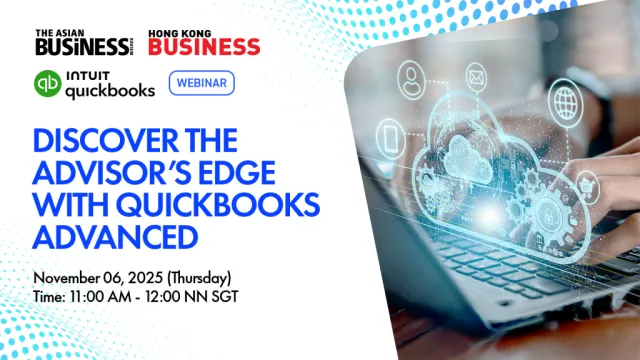
Loyalty- and tech-driven strategies key to effective returns management
Experts vouch for third-party services to leverage the potential of return policies.
The persistent challenge of reverse logistics has been an ongoing dilemma for retailers, a situation now exacerbated by the rise in online shopping. However, some retailers still choose to shelve this concern, resulting in a disorganised or dysfunctional returns management system.
“To date, companies have struggled to grasp the pivotal role that returns play in shaping customer loyalty and, as such, have inadvertently sidelined this part of the customer journey. But the landscape is changing dramatically. Returns are now emerging from the shadows to claim their rightful place as a core element of any retailer’s customer strategy,” Michelle Evans, global lead for Retail and Digital Consumer at Euromonitor International, told Singapore Business Review.
“The industry needs to shift its mindset from viewing the return experience as a revenue drain to seeing it instead as a loyalty driver,” Evans added.
Aside from e-commerce trends, the closure of physical stores by some brands is leading to more returns.
Evans also cited returns generated by the rise of retail concepts such as Buy Now, Pay Later and retailer-led membership benefits like Amazon’s Prime Try Before You Buy, which enables consumers to obtain merchandise without outright payment.
Euromonitor’s Voice of the Consumer: Digital Survey showed that 43% of digital consumers point to mail as the preferred channel for online purchase returns, with preferences varying by generation. For example, Baby Boomers prefer to return by mail, whilst Gen Zs prefer to return in-store.
“Though on the decline, half of digital consumers desire free returns, citing it as the most preferred delivery feature only after free delivery (63%). 15% say they will abort a transaction if the return policy is subpar. In addition, consumers value prompt refunds,” Evans said.
How to handle returns
Returns can be prompted by a variety of reasons but one thing’s for sure: a returned item came from an unhappy customer. To counter this, retailers must deploy strategies that would work best for their brand, according to Euromonitor’s Top Five Digital Consumer Trends 2024 on consumers’ desire for hassle-free returns.
For example, Evans said that for some brands, offering their customers generous compensation has proven to be an effective approach.
“Innovative retailers can create returns policies that offer more generous terms on higher margin goods. For example, US-based retailer Target offers a more lenient return policy on its 45 store brands,” she said.
“Another option is to offer a more favourable returns policy as part of a loyalty membership programme to reward those who regularly shop with the brand,” she added.
Greg Buzek, president and lead analyst of global market research and analyst firm IHL Group, suggested that encouraging customers to return items in-store is also a good strategy as customers may be prompted to buy additional items.
In mitigating the overwhelming stress brought about by returns, Buzek also suggested “leveraging a trusted third-party service that can help design and execute the reverse logistics process, and that has the network, technology, and experience to optimise the reselling or liquidating of the returned items.”
Commenting on this, Evans said “More retailers are outsourcing the return experience to companies like Happy Returns or Loop Returns.” She added: “Other retailers, especially in Europe, participate in an open locker network to make delivery and returns more convenient and cost-effective.
What’s interesting is where the bulk of these returns end up. “This has led to a rise in bin stores, which sell online items from major online retailers, and use a daily descending price structure to move products,” said Evans.
A successful returns management system is one that benefits both the retailer and the customer and does not subject either to further inconvenience. Retailers should have the flexibility to maintain a balanced approach.
“TJ Maxx, Zara and H&M are charging a nominal fee of US$2-US$12 for returns to offset the expense,” Evans said. “Some retailers have shortened the return window to discourage return fraud, and incentivise customers to opt for an exchange or store credit. For example, Asian home furnishings retailer Miniso narrowed the return window to just seven days for the US and Canada. Shoppers in Australia and the UK have four times as long.”
“By offering seamless, free-of-charge returns and prioritising swift refund processing, e-commerce companies can enhance customer loyalty and differentiate themselves in a competitive market,” she added.
Incorporating tech-driven strategies
To cater to the ever-evolving digital sphere, Buzek highlighted the importance of data and analytics to determine the optimal price, channel, and timing for reselling or liquidating the returned items.
Buzek affirmed that the use of AI-powered features such as “true-fit sizing technology, virtual try-ons, and chatbots can help customers make better purchasing decisions and reduce returns.”
In Asia, Thailand-based fashion brand POMELO embraces technology in developing a seamless supply chain management system. This strategy is achieved through Pomelo’s Tap.Try.Buy feature.
“In POMELO we have an omni-channel approach that we call Tap.Try.Buy. We allow customers to select online in their application item that they want to try on, select the store that they would like to try and get it delivered to the store. Typically in our warehouse and logistics network, we are able to stay within 24 hours so the customer can try within 24 hours,” explained Lai Tze Suing, chief logistics officer at POMELO Fashion.
With the Tap.Try.Buy feature, customers can try on their desired item at preferred stores where they can either choose to buy it or leave it at that store. This enables POMELO to complete a whole purchasing cycle within 24 hours.
“So this is another example of how it creates inventory to be optimised. Less loss of sales opportunity, because there’s no return in the cycle,” Lai said.
Sustainable return process
An effective returns management system not only ensures satisfaction to customers and retailers but to the environment as well.
Returns contribute additional carbon footprint and pollution. In some cases, undesired items may also simply end up in landfill.
Commenting on this, Buzek shared a few solutions to mitigate the negative effects of returns to the environment including the “use collection points, carrier networks, or third-party services to consolidate and transport the returned items.”
He added that “reselling or liquidating the returned items as quickly and profitably as possible, [to avoid] sending them to landfill” and “communicating the environmental impact and benefits of their return practices to their customers and stakeholders” are some sustainable patterns that retailers can bring to the fore.
Meanwhile, Euromonitor said that “amending return policies could help improve sustainability profiles and strengthen brand loyalty by linking policies with environment-friendly rewards systems.”
“For example, Australia-based e-commerce platform, On Fleek, incentivises shoppers that are not returning their products by awarding them points that can be used to plant trees and, subsequently, offset their carbon emissions,” Evans said.
Ultimately, a good strategy is the one well-thought-out and is open to adapting to the changing environment.
“It is imperative that retailers create a better experience, so it does not erode long-term profitability or customer loyalty,” she said.



















 Advertise
Advertise








